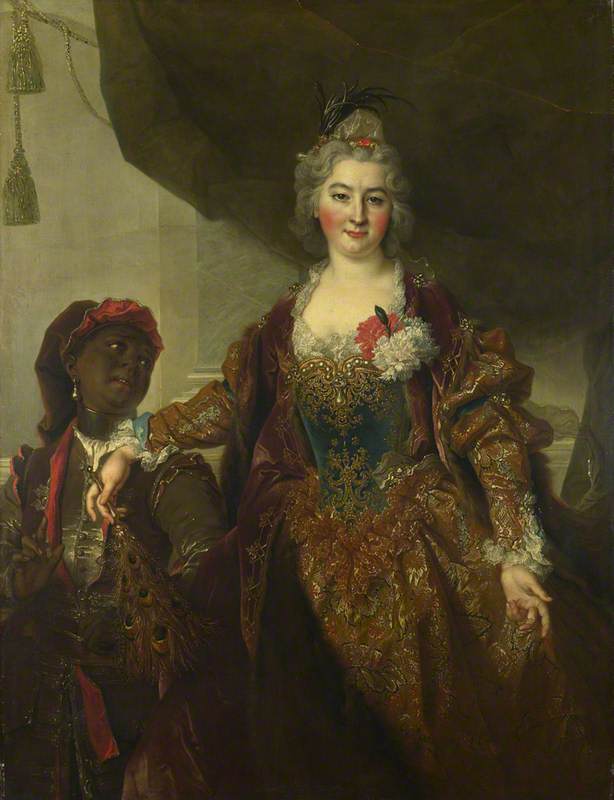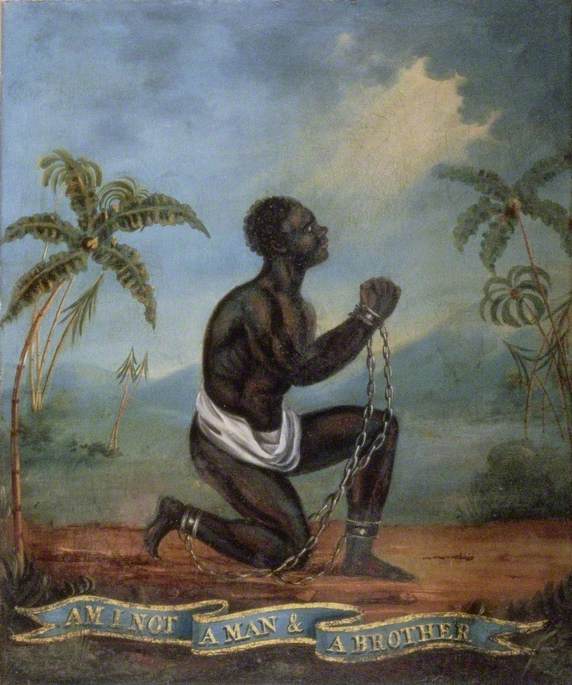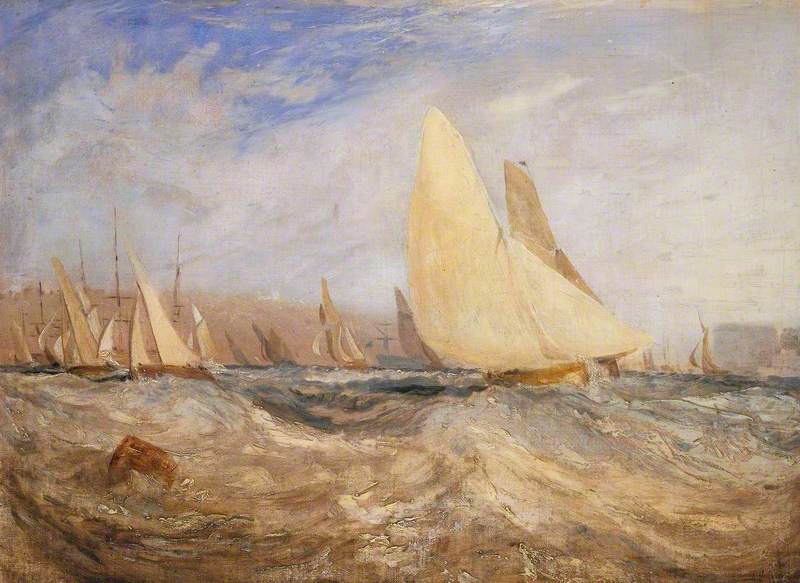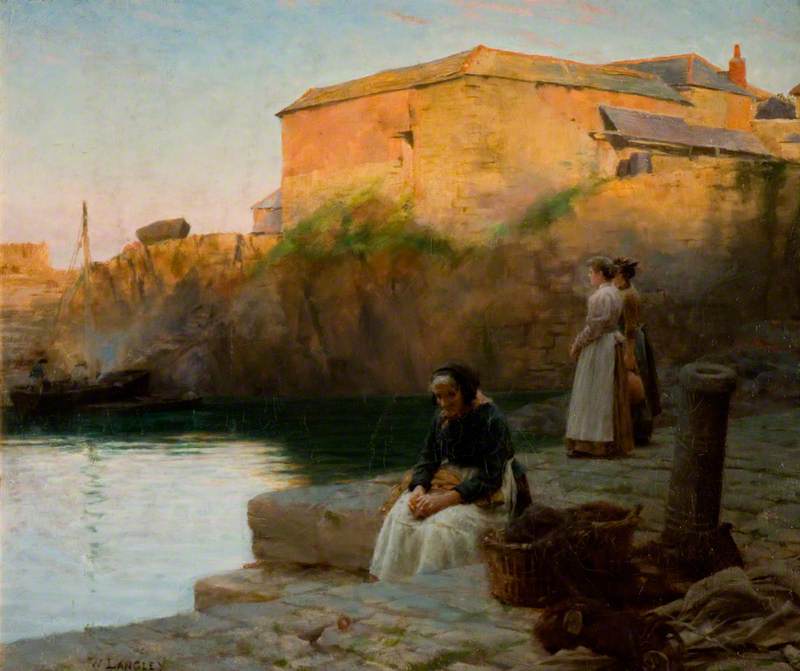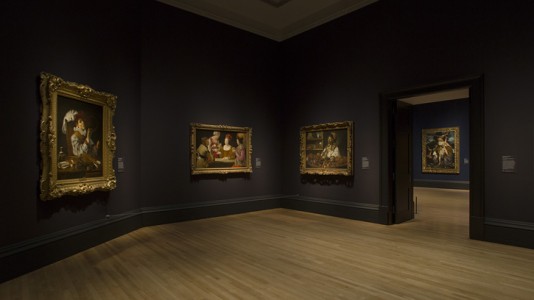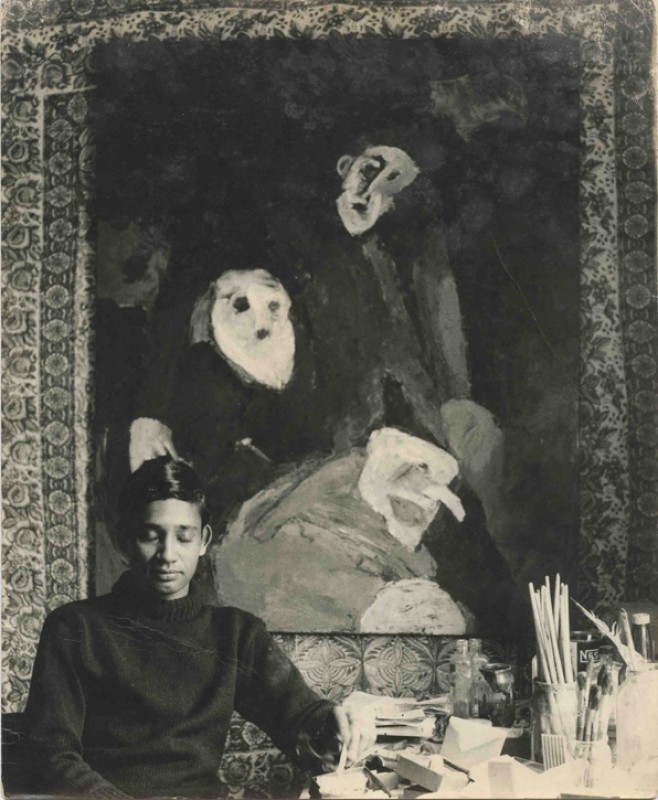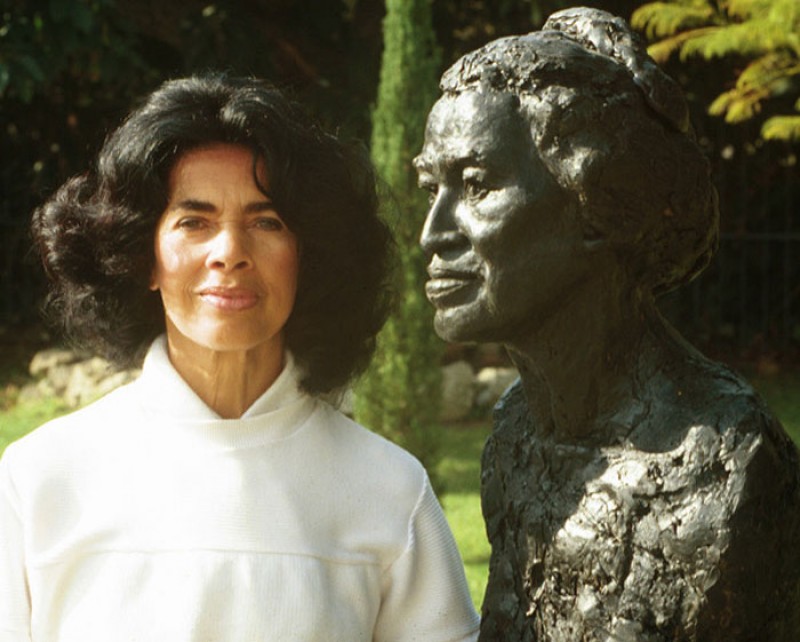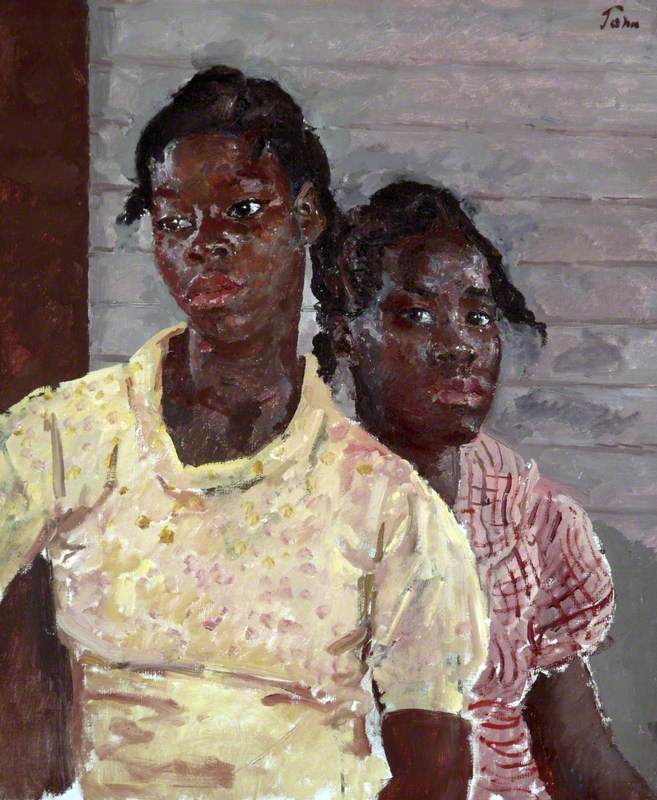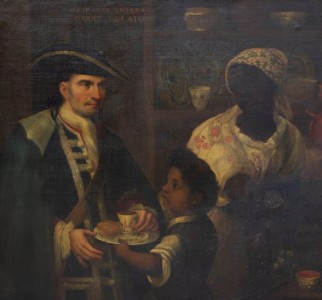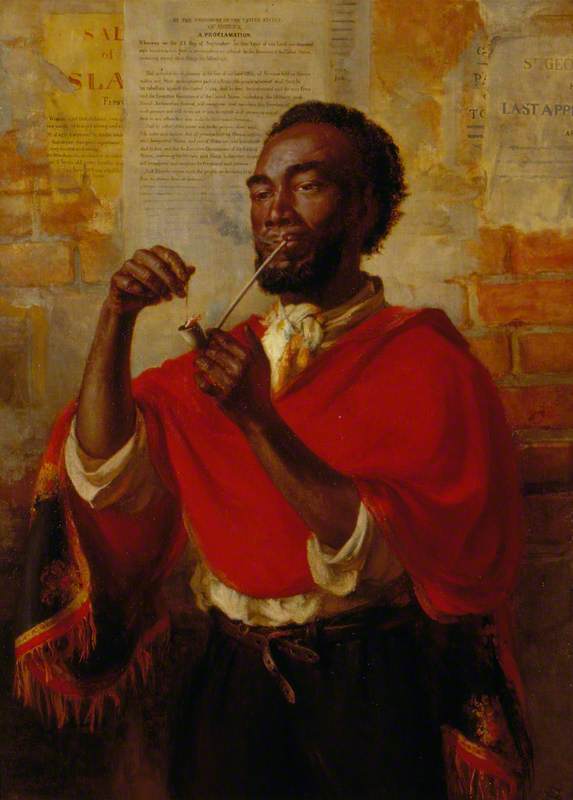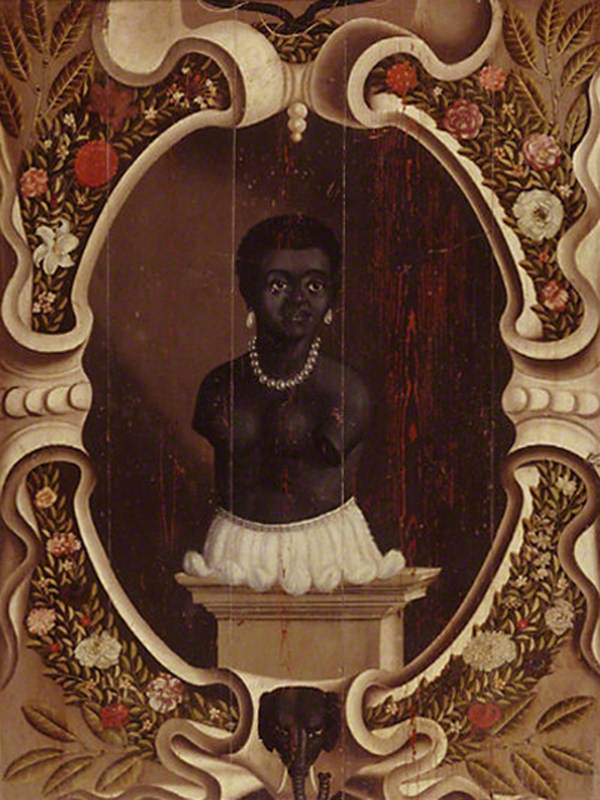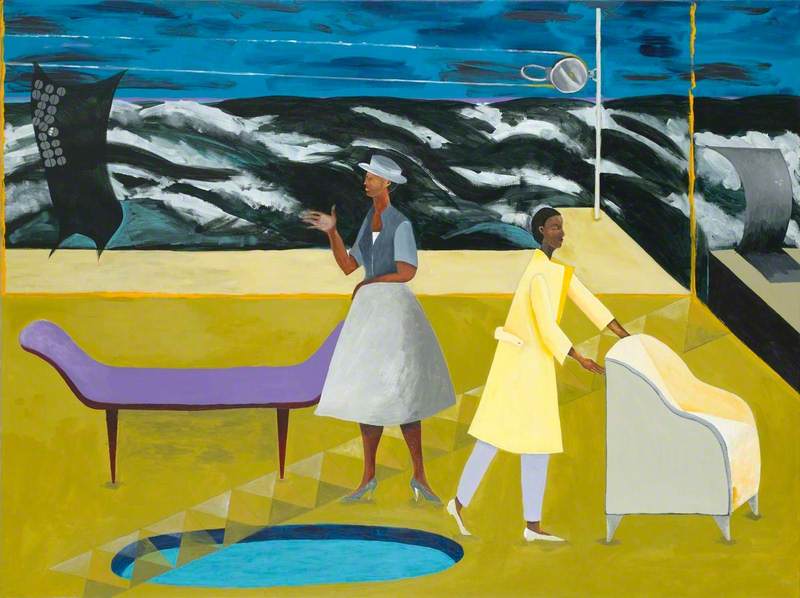'Art's great terrible truth composed in brush strokes out of so many small lies' was once written by the poet and novelist Joyce Carol Oates in response to the painting The Gulf Stream (1902).
The famous oil painting, which is currently on display at The National Gallery's exhibition 'Winslow Homer: Force of Nature' (until 8th January 2023), is one of the most significant works produced by the painter, Winslow Homer, who chronicled life in America during one of its most turbulent centuries.
The Gulf Stream
1899, oil on canvas by Winslow Homer (1836–1910) 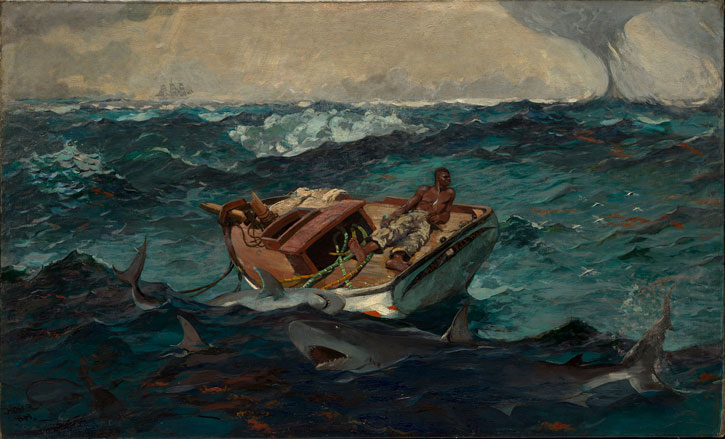
Although a well-loved artist in America, Homer is a relatively obscure historic figure amongst European audiences. Despite voyaging to England in the early 1880s – to document the fishing village of Cullercoats in Northumberland – he remains a neglected figure in the history of British art, which is one reason for the pertinence of The National Gallery show, which is the first to showcase his work in the UK.
Homer's lack of critical attention in Britain is unclear, though possibly his US-centric subject matters – sometimes earning him the title of 'Yankee realist' – didn't attract his work to museums, collectors and art historians. In 1876, one independent critic responding to Homer's work at the Centennial Exposition declared: 'We frankly confess that we detest his subjects...he has chosen the least pictorial range of scenery and civilization; he has resolutely treated them as if they were pictorial.'
Winslow Homer
1880, photograph by Martin van Meytes (1821–1896) 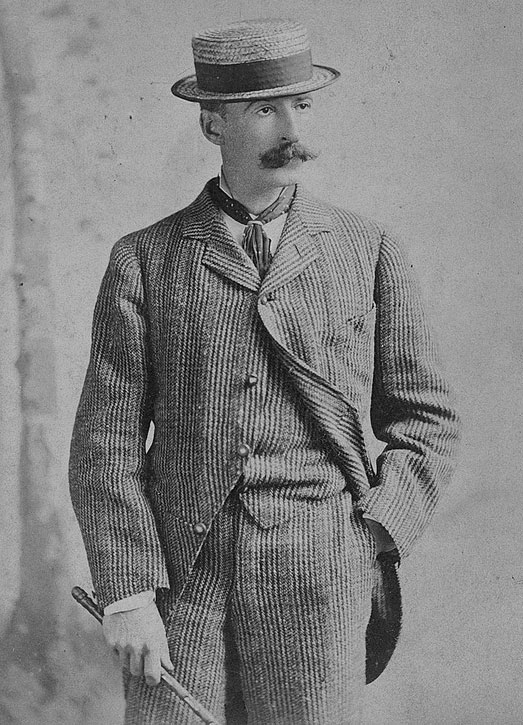
Homer's quintessential 'Americanness' is reflected in his commitment to capturing the complex social and political issues erupting in his home country, especially those during the time of the Civil War (1861–1865) and the following Reconstruction era (1865–1877). Commissioned by Harper's Weekly to document the activities of the Unionists from the front lines in Virginia in 1861, Homer was traumatised by the bloodshed he witnessed, perhaps explaining his shift in subject matter after the war. Throughout the 1860s and 1870s, he meditated on the status and plight of Black Americans, as seen in works such as The Cotton Pickers. His paintings brought to light that despite the end of slavery, Black Americans remained trapped in exploitative labour.
The Cotton Pickers
1876, oil on canvas by Winslow Homer (1836–1910) 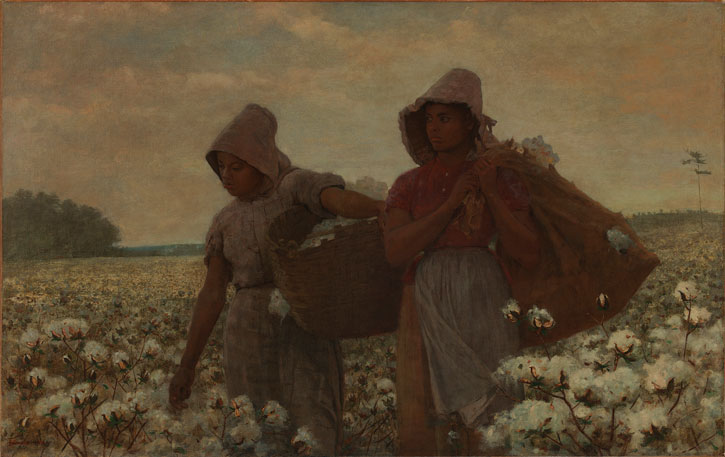
Towards the end of his career, Homer turned away from painting people and became a recluse. His attention shifted towards nature, in particular marine subjects and the sea. Many of his works from this period depict the Atlantic Ocean and the rocky coastline of Maine, where he remained on the peninsula of Prouts Neck until his death in 1910. On the east coast, he produced a number of startling seascapes with vivid colour and loose brushwork that captured the immensity and power of nature.
So why is The Gulf Stream such an important work in his oeuvre? And why does it continue to provoke and resonate with viewers today? Produced in 1899, but reworked in 1906, the painting combines two of Homer's artistic interests – the power of the ocean and the plight of African Americans. By conflating the two subjects, the painting holds a wider allegorical significance, one that points to American imperialism and the precarious status of Black Americans in the latter half of the nineteenth century.
Detail of 'The Gulf Stream'
1899, oil on canvas by Winslow Homer (1836–1910) 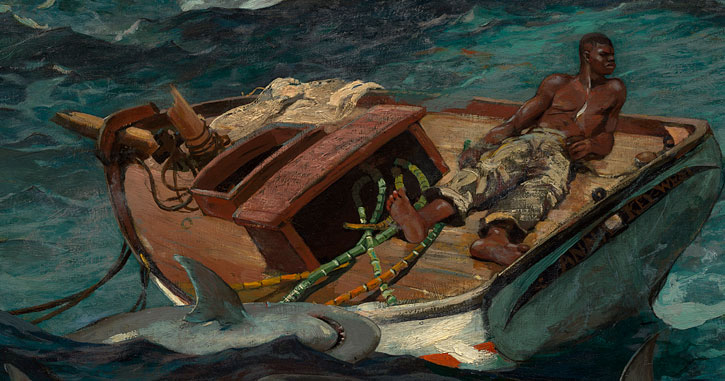
At the centre of the composition, a solitary Black man sits onboard a rudderless fishing boat. The tumultuous sea surrounding him is infested with sharks, which appear in the foreground of the painting with open jaws. In the distance, a tornado descends from the sky and the billowing sails of a ship can be detected on the horizon. Oates wrote in her poem: 'To the right of the canvas, in the background, there is a funnel of water rising dreamily out of the sea to no purpose. And though on the horizon a ship has appeared – ghostly, four-masted, storybook – it cannot save the doomed man.'
Although Oates' predictions may be correct – that the man before us is doomed – what is striking about Homer's rendering is the subject's ease. Although the boat is on the brink of being capsized by the crashing waves, Homer's enigmatic figure seems to be calmly weighing up his options. Despite the frown on his face as he looks to his left, his relaxed body language indicates that he expected such a treacherous fate would befall him – it comes as no surprise. As viewers, we are compelled to engage with this work through compassionate identification. Will the man perish, or will he survive?
The Gulf Stream
1898, watercolour on paper by Winslow Homer (1836–1910) 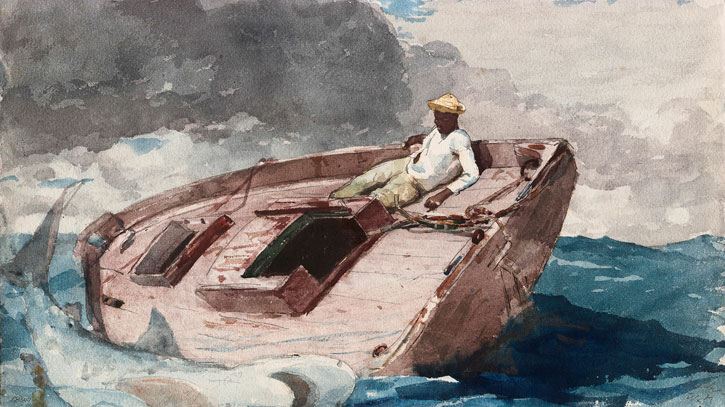
In this sense, Homer's painting speaks metaphorically to the dangers facing African Americans in the post-Civil War era. With the abolishment of slavery, life had in legal terms improved for Black Americans, yet with the rise of the Jim Crow Laws, the Ku Klux Klan and other hostile groups, Black people in America remained systemically oppressed and ostracised.
In today's context, art historians and critics have noted that this painting resonates with the social issues permeating contemporary American life, with its deep-set divisions and foreboding political situation that undeniably echoes the past. As Jonathan Jones writing for the Guardian aptly observed: 'Homer hasn't any answers but he poses the question of how a nation with such a legacy of slavery can ever escape its past.'
Study for 'The Gulf Stream'
1898–1899, watercolour on paper by Winslow Homer (1836–1910) 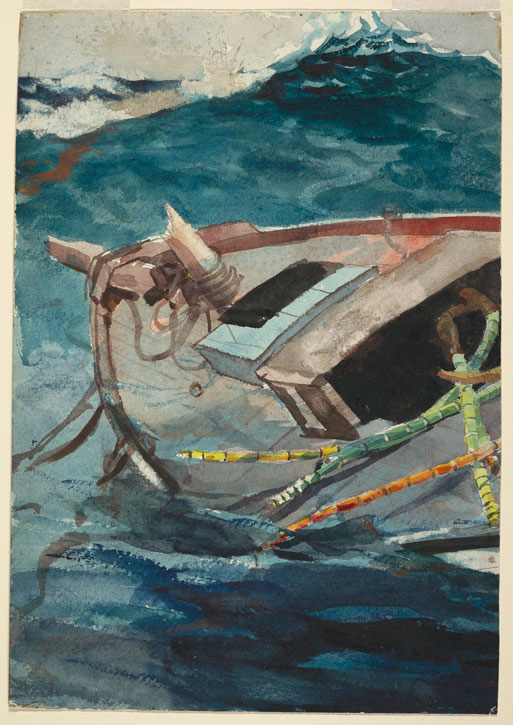
Indeed, the dark and intractable legacy of slavery is captured in The Gulf Stream. It is therefore fitting that Oates' poem concludes in the following way: 'And though on the horizon a ship has appeared – ghostly, four-masted, story-book – it cannot save the doomed man, it is irrelevant to his story. With what composure he stares off the canvas, indifferent to his fate! As if, long ago, he'd memorised all the forms of the Gulf, now it is time to forget.'
Lydia Figes, Content Editor at Art UK
'Winslow Homer: Force of Nature' at The National Gallery runs until 8th January 2023
